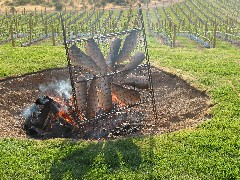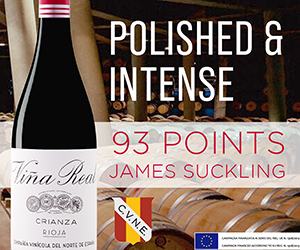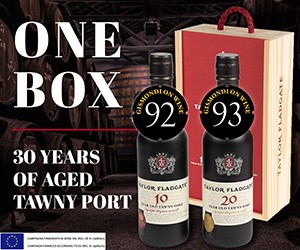North America's first aboriginal-owned and operated winery officially opened for business this past weekend, and it's a worthy addition to any wine buff's south Okanagan touring map.
Its name is Nk'Mip (pronounced "inkameep") Cellars, a joint venture of the Osoyoos Indian Band ("Nk'Mip" in the native Okanagan language), and Canadian wine giant Vincor International.
Everything seems right about Robert Mackenzie's design of this winery, including its half-buried footprint that allows it to blend effortlessly into the Osoyoos Bench, at the extreme southern end of the Okanagan Valley.
The winery is the second phase of a $25 million project that will see further development of the winery, an all-season RV park, a nine-hole golf course, and a centre for accommodations and conferences on a 1,200-acre parcel of band land that adjoins the town of Osoyoos and fronts on to Osoyoos Lake.
Chief Clarence Louie is the driving force behind this most industrious band, and he should be extremely proud of its latest achievement.
Speaking to a sold-out opening night crowd of 250 on Saturday, Louie spoke about the courage, vision, balance and drive that made Nk'Mip Cellars possible, and about developing "a climate that's organized and secure" to ensure success in whatever his people do.
If you haven't guessed by now, the winery motif and its packaging reflect native B.C. design, and it's a welcome relief from the schlock labels and nouveau-European names that so many New World wineries adopt in the hope it might bring them some sort of instant credibility.
Nk'Mip's logo features a turtle on an arrowhead, and comes from a legend about a "turtle that set the Animal People free." Legend has it that Eagle raced all the Animal People, who lost because Eagle was so fast. Once the Animal People had lost, they became slaves to Eagle. One day Turtle decided to race Eagle. Turtle won the race by outwitting Eagle and freed all the Animal People.
An added bonus for the wine tourist, and only a few hundred metres away from the winery, is an interpretive Desert and Heritage Centre that the band hopes will protect the remaining Nk'Mip desert land and its threatened species. A program to restore habitat and reintroduce species at risk on the land is already under way from temporary trailers that will be replaced by a permanent building.
Visitors can follow trails that wander the sage desert habitat to a forest grove where a traditional tule mat teepee, an underground pit house and a sweat hut have been recreated.
Along sections of the trail are interpretive signs that point out plant life and describe the terrain and history of this land that is home to the Osoyoos people and more than 23 species of plants and animals currently at risk, such as the rattlesnake, the burrowing owl, arrow-leaf, balsam-root and antelope brush.
As for the winery, it's a must stop for touring wine types. At present the 18,000-square-foot multi-level facility has the capacity to produce 15,000 cases. After a smallish (3,300 cases) start in 2000, the next year's production quickly jumped to 7,300 cases.
The current releases that are described below were made under the supervision of Jackson-Triggs winemaker Bruce Nicholson, but the band has since chosen Randy Picton, formerly with CedarCreek, to become Nk'Mip's head winemaker.
Nk'Mip produces four varietal labels: chardonnay, pinot blanc, pinot noir and merlot, all from its own Inkameep Vineyard. All four from the inaugural 2000 vintage are still available at the winery and VQA shops. The 2001 vintage should reach government liquor stores sometime next year.
Here are my notes on the 2000 wines:
The chardonnay has light, buttery, honey/peach aromas, with a touch of mineral and vanilla. Similar flavours with good intensity and a round warm finish will attract many. This is a fine first effort showing style and promise. ($16; #626408)
In the pinot blanc you find typical peachy, mineral fruit streaked by cool, herbal butter notes. Honey, peach pit and apple flavours mark the entry, mixed with more mineral. The finish is slightly sour, with an acidic edge that leaves this white slightly off kilter. ($14; #626432)
The pinot noir surprises you with its raw raspberry/sour cherry nose, mixed with a whiff of barnyard and compost. It's smooth on the palate, with spicy vanilla jam and a touch of coffee. It's young and there's some dryness yet to dissipate, but this looks like it's worth keeping another year. A very pleasant surprise that paired well with quail paté. ($18; #626424)
The merlot has a spicy, leathery prune scent, mixed with toasted oak and vanilla. The entry has similar flavours, plus smoke, oak and a substantial whack of dry tannins. It quickly dries out your mouth and leaves a bitter taste. The skinny mid-palate simply doesn't have the stuffing to carry so much wood. Grilled meat dishes should help knock down the bitter tannins. ($17; #626416)
Written By: ag

 quicksearch
quicksearch






